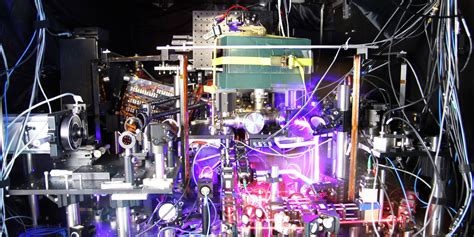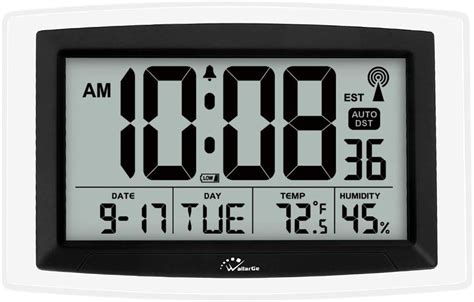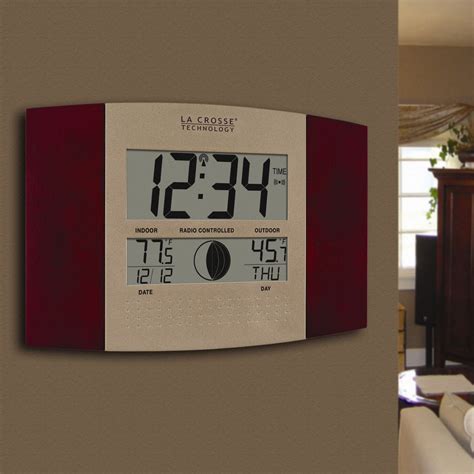What are Atomic Clocks?
An atomic clock is a clock that uses the frequency of an atomic transition to keep time. Atomic clocks are the most accurate timekeeping devices in the world, with an error rate of less than one second in millions of years. They are used in many applications that require precise timing, such as GPS navigation, telecommunications, and scientific research.
How Do Atomic Clocks Work?
Atomic clocks work by measuring the frequency of an atomic transition. An atomic transition is a change in the energy state of an atom, which can be induced by exposing the atom to electromagnetic radiation of a specific frequency. The frequency of this transition is determined by the laws of quantum mechanics and is extremely stable.
To create an atomic clock, a sample of atoms is exposed to electromagnetic radiation at the frequency of the atomic transition. The atoms absorb the radiation and change their energy state, emitting radiation at the same frequency. This emitted radiation is then used to drive a resonator, which produces a stable frequency that can be used to keep time.
Types of Atomic Clocks
There are several types of atomic clocks, each using a different type of atom and atomic transition. The most common types of atomic clocks are:
Cesium Atomic Clocks
Cesium atomic clocks are the most widely used type of atomic clock. They use the transition between two hyperfine energy levels of the cesium-133 atom, which has a frequency of 9,192,631,770 Hz. Cesium atomic clocks are used as the primary time and frequency standard for the International System of Units (SI).
Rubidium Atomic Clocks
Rubidium atomic clocks use the transition between two hyperfine energy levels of the rubidium-87 atom, which has a frequency of 6,834,682,610.904 Hz. Rubidium atomic clocks are smaller and less expensive than cesium atomic clocks, but they are not as accurate.
Hydrogen Masers
Hydrogen masers use the transition between two hyperfine energy levels of the hydrogen atom, which has a frequency of 1,420,405,751.7667 Hz. Hydrogen masers are more accurate than cesium atomic clocks, but they are larger and more expensive.
Applications of Atomic Clocks
Atomic clocks have many applications that require precise timing, including:
GPS Navigation
The Global Positioning System (GPS) relies on atomic clocks to provide accurate timing signals to GPS receivers. Each GPS satellite contains multiple atomic clocks, which are synchronized with ground-based atomic clocks to ensure accurate positioning.
Telecommunications
Telecommunications networks require precise timing to synchronize the transmission of data between different nodes. Atomic clocks are used to provide the necessary timing signals for these networks.
Scientific Research
Atomic clocks are used in many scientific experiments that require precise timing, such as measuring the effects of gravity on time or testing the fundamental laws of physics.
RC Atomic Clocks
RC atomic clocks are a type of atomic clock that uses a radio-controlled (RC) signal to synchronize with a master atomic clock. These clocks are designed for use in consumer applications, such as wall clocks and wristwatches.
How Do RC Atomic Clocks Work?
RC atomic clocks work by receiving a radio signal from a master atomic clock, which is typically located at a government-operated time station. The radio signal contains a time code that the RC atomic clock uses to synchronize its internal oscillator.
The most common radio signals used by RC atomic clocks are:
| Signal | Frequency | Location |
|---|---|---|
| WWVB | 60 kHz | Fort Collins, Colorado, USA |
| DCF77 | 77.5 kHz | Mainflingen, Germany |
| MSF | 60 kHz | Anthorn, UK |
| JJY | 40 kHz, 60 kHz | Mount Otakadoya and Mount Hagane, Japan |
These signals are transmitted at low frequencies, which allows them to propagate long distances and penetrate buildings. The signals are also highly stable and accurate, with an error rate of less than one second in millions of years.
Advantages of RC Atomic Clocks
RC atomic clocks have several advantages over traditional quartz clocks, including:
Accuracy
RC atomic clocks are synchronized with a master atomic clock, which means they are highly accurate. They typically have an error rate of less than one second per year.
Automatic Time Setting
RC atomic clocks automatically set themselves to the correct time when they receive the radio signal from the master atomic clock. This means they do not need to be manually set or adjusted for daylight saving time.
Low Maintenance
RC atomic clocks do not require any maintenance, such as battery replacement or manual time setting. They will continue to keep accurate time as long as they can receive the radio signal.
Disadvantages of RC Atomic Clocks
RC atomic clocks also have some disadvantages, including:
Limited Range
RC atomic clocks can only receive the radio signal within a certain range of the transmitter. This range varies depending on the frequency and power of the signal, but it is typically limited to a few thousand kilometers.
Signal Interference
RC atomic clocks can be affected by signal interference from other electronic devices, such as computers and televisions. This interference can cause the clock to lose synchronization with the master atomic clock.
Cost
RC atomic clocks are generally more expensive than traditional quartz clocks, due to the additional circuitry required to receive and process the radio signal.

Frequently Asked Questions
Q: How often do RC atomic clocks synchronize with the master atomic clock?
A: RC atomic clocks typically synchronize with the master atomic clock once per day, usually at night when the signal is strongest.
Q: Can RC atomic clocks be used in areas without radio coverage?
A: No, RC atomic clocks require a radio signal to synchronize with the master atomic clock. If there is no radio coverage in the area, the clock will not be able to keep accurate time.
Q: How long do RC atomic clocks last?
A: RC atomic clocks can last for many years, as they do not require any maintenance or battery replacement. However, the lifespan of the clock may be limited by the quality of the components used in its construction.
Q: Are RC atomic clocks affected by power outages?
A: RC atomic clocks are typically battery-powered, so they will continue to keep time during a power outage. However, if the power outage lasts for an extended period, the clock may lose synchronization with the master atomic clock and need to be resynchronized when power is restored.
Q: Can RC atomic clocks be used for scientific applications?
A: While RC atomic clocks are highly accurate, they are not typically used for scientific applications that require the highest level of precision. For these applications, standalone atomic clocks, such as cesium atomic clocks or hydrogen masers, are used instead.

Conclusion
Atomic clocks are the most precise timekeeping devices in the world, and they are essential for many applications that require accurate timing. RC atomic clocks are a type of atomic clock that uses a radio-controlled signal to synchronize with a master atomic clock, making them ideal for consumer applications such as wall clocks and wristwatches.
While RC atomic clocks have some limitations, such as limited range and potential signal interference, they offer many advantages over traditional quartz clocks, including high accuracy, automatic time setting, and low maintenance. As technology continues to advance, it is likely that RC atomic clocks will become even more widespread and affordable, making precise timekeeping accessible to everyone.


No responses yet